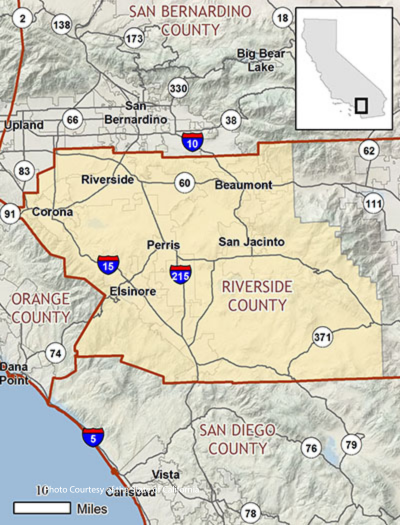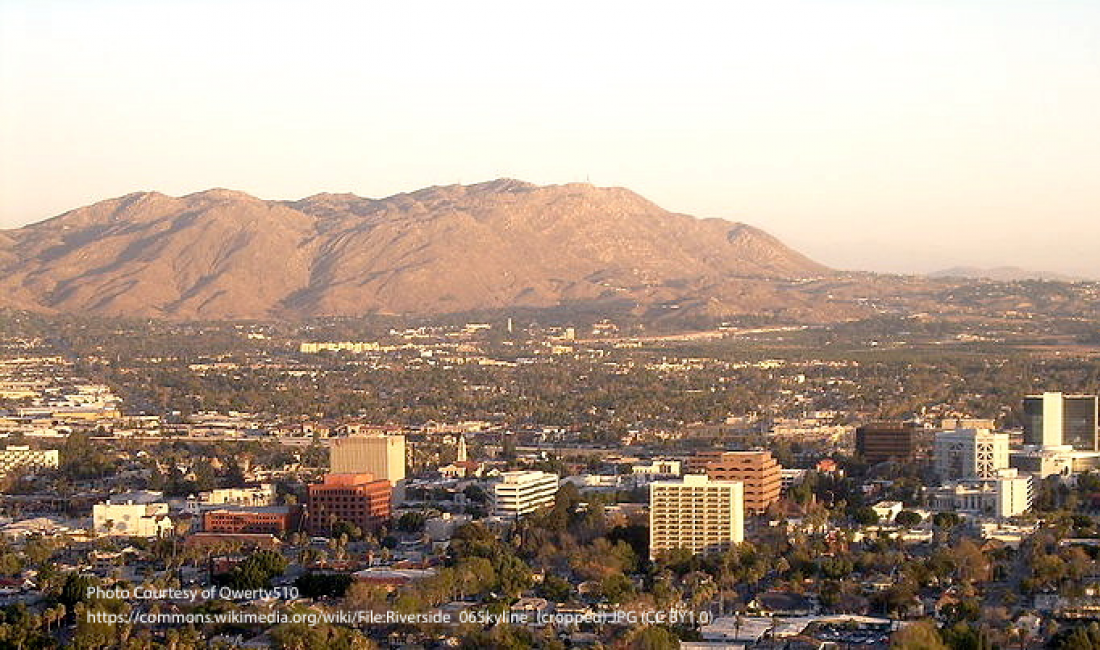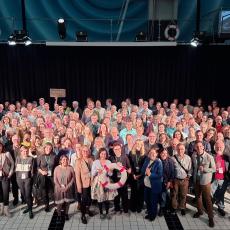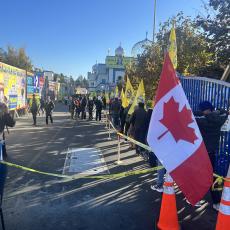A finalist for the "All-America City" award isn't a city at all. It's a council of many governments.
This column is co-published with Zócalo Public Square.
The first 19 cities on the alphabetical list of 20 finalists for this year’s All-America City Award, the most prestigious annual prize in local governance, are the kinds of places you’d expect. You’ll find big, growing cities like Austin, Denver, and Seattle, and distinguished small towns such as Snyder, Texas and Statesboro, Georgia.
But at the very bottom of the roster sits a surprise and a puzzle: “Western Riverside Region, California.” There is no municipality in the state that goes by that name.
That’s because Western Riverside is not a city. It’s an organization of municipalities and other local governments, known as a COG, or council of governments. And its inclusion on the list appears to be historic. While local regions and counties have won the All-America City Award, the National Civic League is unaware of any COG making its list of finalists before.
Western Riverside’s selection also points to the future.
As national governments (including our own) are consumed by populism and political conflict, they are neglecting their responsibilities to address national and planetary problems like climate change, disease, corruption, and inequality. The work of handling these difficulties is falling to cities and other local governments.
But individual local governments often lack the capacity in personnel, technical skills, infrastructure, and funding to address such big problems. In response, local governments around the world are finding they must collaborate with each other to build capacity.
Which is where the COG comes in. COGs are voluntary associations that assist member local governments, typically cities and counties within a larger region, with planning, coordination, and technical assistance on issues that cross jurisdictional lines. There are 23 COGs in California, and more than 500 nationwide. Some of California’s COGs—particularly ABAG (Association of Bay Area Governments), SCAG (Southern California Association of Governments), and SANDAG (San Diego Association of Government)—are well-known for their regional transportation planning.
Western Riverside Council of Governments (WRCOG) does not draw as much notice as these COGs. But with a mandate to “respect local control, provide regional perspective, and make a difference,” it has been crucial to the success of one of the fastest-growing regions in slow-growth 21st-century California.
WRCOG aims to provide a “collective voice” for the Riverside County government, two regional water districts, the county schools superintendent, and 18 demographically and politically diverse cities. The municipalities, who send representatives to a 23-person board, range from the young and thriving Eastvale and Jurupa Valley in the county’s northwest corner to Banning in the eastern desert, and from Hemet in the San Jacinto mountains to Temecula on the San Diego County border.
“No one can do it alone—but when everyone puts their oars in the water and rows in the same direction, that’s when collaboration becomes momentum,” says Brenda Dennstedt, WRCOG’s chair.
If WRCOG’s 527-square-mile region were one city, it would have more than 2 million people, making it the second most populous municipality in California and the fifth most populous in the country.
This growth might not have occurred without WRCOG, which was formed to restore the Inland Empire’s economy and improve planning during a severe recession in the early 1990s.
One challenge was making room for the Stephens’ Kangaroo Rat, a Western Riverside native, which had been listed as an endangered species in 1988. Combined with the recession, new legal requirements to protect the rat had drastically slowed development in the area, especially in poorer communities that badly needed new housing and infrastructure. Through the COG, governments came together to establish a county habitat conservation agency, which conducted more than 40 public forums to develop a Stephens’ Kangaroo Rat Habitat Conservation Plan.
The initiative ultimately protected 46,000 acres from development for the benefit of the rat (which today is only “threatened” not endangered), for other species, and for human recreation. The plan also made it easier to build affordable housing and infrastructure in other areas.
WRCOG, with a staff of 35, is unusual for the breadth of its programs, and its willingness to experiment and innovate to enhance the governing capacity of its member cities.
Among its major initiatives are two fellowship programs to produce skilled government workers, particularly in energy and environmental sustainability. The WRCOG Public Service Fellowship, launched in 2016, places students in city and county agencies and funds up to 100% of their salaries. In 2022, WRCOG launched an energy fellowship with I-REN (Inland Regional Energy Network) to train university and community college students to work for local agencies on municipal energy audits, climate planning, and energy-saving measures.
WRCOG also encourages local residents to volunteer their time to enhance government’s reach. Its Love Your Neighborhood program has placed over 5,000 volunteers on environmental projects, from community clean-ups to stormwater pollution prevention. Its new Regional Food Rescue Program fights food waste and climate change by enabling direct donations from restaurants and other food-generating businesses to a network of more than 50 food banks and nonprofits.
The COG’s community engagement and capacity building skills are almost certainly why it was recognized as a finalist by the National Civic League, founded by Louis Brandeis, Teddy Roosevelt and other municipal leaders in 1894. The civic league’s All-America City Award recognizes “communities whose citizens work together to identify and tackle community-wide challenges and achieve uncommon results.” This year’s award theme emphasizes “strengthening environmental sustainability through inclusive community engagement.”
Western Riverside, and members of its all-female executive team, are expected to join representatives of the other 19 finalists to “present their stories” in late June in Denver, where the All-America City designation will be awarded to 10 cities.
Or perhaps to nine cities and one vital COG in inland Southern California.





